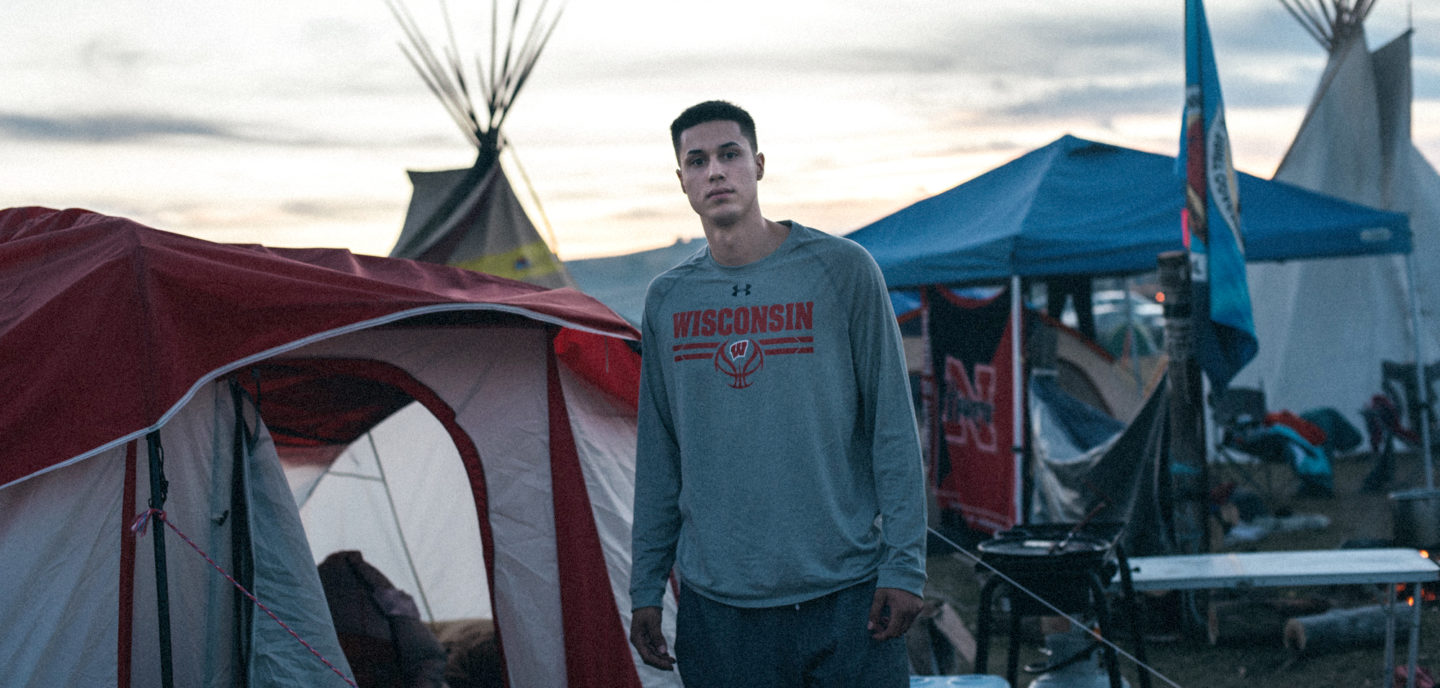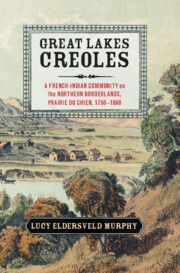Becoming Black, White, and Indian in Wisconsin Farm Country, 1850s–1910s
Middle West Review
Volume 2, Number 2, Spring 2016
pages 53-84
DOI: 10.1353/mwr.2016.0009
Jennifer Kirsten Stinson, Associate Professor of History
Saginaw Valley State University, University Center, Michigan

Fig 1. Location of the Revels kindred community in Forest Township, Vernon County, Wisconsin. Map courtesy of the author. |
In 1908, Effie Revels penned a memoir, titled the “Diary of the Revels Family,” which chronicled the westward journey taken by her parents, Morning and Micajah, in 1854. After struggles in their Georgia and North Carolina homelands, they obtained a U.S. land patent in western Wisconsin’s Vernon County. There, in a place to which Ho-Chunks returned yearly and which Sauks had recently left, the Revelses helped to found the Forest Township farm neighborhood in the county’s northeastern portion. Effie described their 160 acres as the “roughest that part knows of;” its sharp-rising ridges and deep-plunging valleys made planting and harvesting difficult. But the family’s skill and cooperation with neighbors yielded prosperity into the 1890s. Flora Revels, Morning’s and Micajah’s great-granddaughter, loved Forest’s annual picnics of that era, where kin and friends, as she recalled in an oral history interview, heard “preaching,” plus “speaking, singing, and a program.” The people who enjoyed these events hailed from the upper South, like Flora’s forebears, as well as the lower Midwest, mid-Atlantic, and Europe.
This is the stuff of standard pioneer stories and popular culture. But the more we read of Effie and the more we listen to Flora, the clearer their stories’ challenge to classic white frontier narratives becomes. From 1860 through 1880, census takers labeled 14 percent of Forest’s population, including these women and their Arms, Bass, Delaney, Roberts, Revels, Shivers, and Waldon kin—hereafter collectively called the Revels kindred or Forest’s families—“mulatto” or occasionally “black.” They called themselves “colored,” “Indian,” and “Cherokee,” and they invoked Robeson Indian ties.
This article examines how contests over belonging and transitions to racialized thinking arose at the intersection of American modernity and traditional Indigenous and rural values. It argues, first, that Forest’s founding generation of the 1850s through 1870s did not separate into oppositional, mutually exclusive racial groups. Rather, Wisconsin’s relative civil rights tolerance, displacement of Ho-Chunks, and abundant land allowed the Revels kindred’s U.S. southern Indigenous kin- and land-based belonging and their radical abolitionism to flourish; all of these bound the kindred together. Second, mixing between people whose lives bridged Indigenous-, African-, and Euro-American influences continued during Forest’s 1880s and 1890s post-settlement era. The kindred’s leadership in traditional rural sociability promoted inclusivity. Their modern commercial farming and divergence from allegedly uncivilized African Americans, Ho-Chunks, and Sauks made them model midwesterners and Americans. These factors worked against their racialization. Third, a shift occurred in the late 1890s and early 1900s: The kindred divided into “black,” “white,” and “Indian” when Forest’s traditional close-knit community and kinship collided with modern reconfigurations of race, market pressures, and gender anxieties. Simultaneous to kindred members’ loss of landed independence and manhood, federal officials sought to replace non-racialized and ambiguous statuses with fixed certainty. They predicated U.S. citizenship on racial purity and on quantified Indianness. Cherokees, in response, tried to protect their rights by codifying and sometimes racializing membership.
These arguments enrich a history of the Midwest in which Indigenous lives remain unevenly analyzed, especially their intersections with the region’s African diaspora. Amid a wealth of scholarship on Euro-Indian ties, those few works that do examine midwestern African-Indian connections confine their analysis to the Ho-Chunk, Illini, Ojibwe, Mesquakie, or Sauk. Moreover, they often focus on colonial and early republic Indian-French-British trading culture. They omit other Indigenous midwesterners, who came as farmers from the upper South in the mid-1800s. These included not only the Wisconsin-based Revelses, but also similar kindreds who created substantial communities that combined Indigenous and African diasporic influences: the Beech and Roberts settlements in Indiana’s Rush and Hamilton counties; the Calvin Colony in Cass County, Michigan; and the Longtown Settlement straddling Darke County, Ohio, and Rush County, Indiana. Consideration of the Revels kindred expands understanding of what we mean by the “Indigenous Midwests,” revealing new connections…






